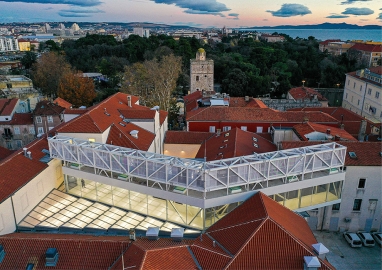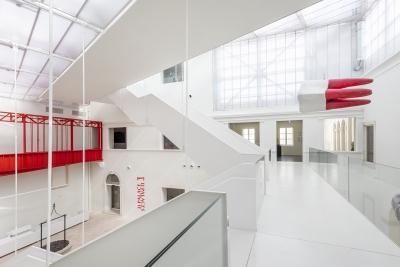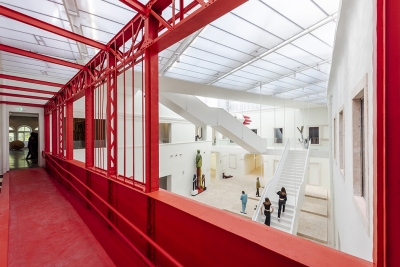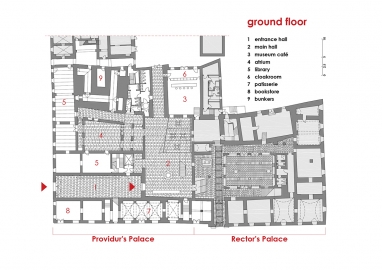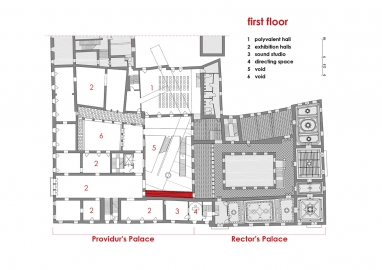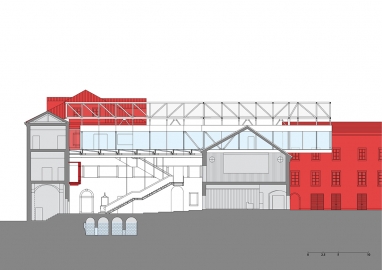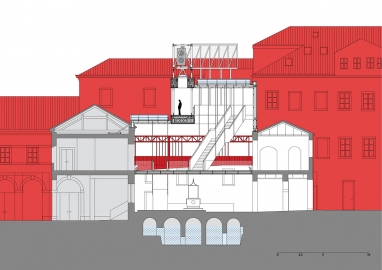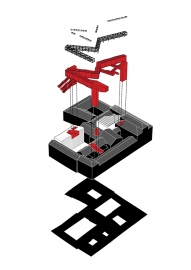Reconstruction of Providur's Palace
Providur’s Palace is the most recently renovated part of an integrated architectural complex in the historic center. A new steel grid, a contemporary intervention within the historical landmarks, placed on the roof of the complex is the technological, communication and construction backbone of the structure, crucial for the building’s viability.
This newborn nexus of art and culture stretches over an area of ten thousand square meters. The complex has been envisioned as a cultural living room for the city of Zadar, as well as a significant center of art and culture in the national context. The renovated palaces now form a well-connected complex while the final functional unification into a single entity will be completed within the scheduled third phase of the project. Most of the interior of the Providur’s Palace is dedicated to gallery spaces while, along with exhibition and educational activities, the building also hosts a branch of the Zadar City Library as well as two concert halls. The Two Palaces compound has been in the process of continuous expansion, reconstruction, partitioning, and destruction depending on the needs of each specific time.
While designing the project for the renovation of both palaces, the architects decided to keep this precious complex, the frozen image of all the transformations and traumas the buildings experienced through history, in the form that it was found in, and not destroy the existing spatial structure.
The overall task for the architects was to create a new and multifaceted interior within the historical compound. The extremely heterogenous conditions had to be transformed to welcome the different use: a museum, a concert hall, a multifunctional hall and the city library. The extreme spatial incoherency of the previous layout was entirely unsuitable as a museum space. One of the major tasks was to create a clear route through the space and make the labyrinthine structure readable.
The Two Palaces project is a symbiosis of contemporary architectural infrastructure and the historical layers found on-site. The conceptual background of the project is a fresh, professional, and daring perspective on renovation of centuries-old buildings, which are provided with new infrastructure and adjusted for previously unintended usage, inside protected historical urban spaces.
A central zone connecting the two buildings is the large atrium of the Providur’s Palace, a former open space, has become a covered passage. The spacious multilevel volume of the atrium is the most monumental part of the complex and has taken over the crucial function of being the main entrance as well as the space from which a visitor can approach every section of the Two Palaces. The space is dominantly white and the light coming through the translucent polycarbonate roof draws the visitor’s eyes upwards, to the steel framework.
The steel framework extends into large white staircases which cut through the space of the atrium like feelers, lightly touching the ground they cannot lean on. This is because the original stone floor hides and protects ancient containers, which now serve as water tanks for sprinklers.
Two bridges cross the open space of the atrium, one newly constructed, one found on-site in the process of renovation. One of the two bridges, a former balcony, is accentuated by its bright red color and has become a kind of trademark of the Palace.

